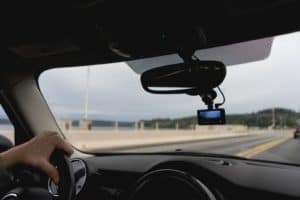Did you happen to see footage of the meteorite that entered Earth’s atmosphere several months ago? Did you ever wonder why most of the video footage of the event originated from ordinary citizens in the Russian city of Chelyabinsk? The answer has to do with one of the most important after-market components that Russian motorists add to their vehicles before they ever consider radar detectors or satellite radios – dashboard cameras. Unfortunately, drivers in Russia have a significant likelihood of being involved in a severe collision. In fact, in a 2007 study, Russian motorists averaged 25.2 traffic fatalities per 100,000 people. By comparison, motorists in the United States had 13.9 road deaths per 100,000 people in the same year, despite having six times more cars.[1] Many Russian drivers opt to purchase cameras for their vehicles in order to maintain their rights and memorialize the facts.[2] The same principle applies in the U.S.
Most people involved in a motor vehicle collision quickly realize that a picture can truly be worth a thousand words. If that is the case, what is the value of a motion picture? The answer, often times, is priceless. Regardless of whether the questions are coming from an insurance company, another driver, law enforcement, or an attorney, there is simply no substitute for being able to show first-hand what happened during a car crash. This is largely why the idea of having a video camera mounted on the dashboard of a vehicle, or on top of the helmet of a motorcycle rider, is becoming increasingly common. Video footage is the eyewitness whose memory does not decay with time, and whose bias or credibility cannot be questioned.
Personal injury attorneys can hire a number of experts to recreate what happened during a collision using calculations of time, speed, and distance. However, most of these experts would still agree that having first hand video footage of the event would be a tremendous advantage in reaching their conclusions.
While this technology became available to consumers about 10 years ago, there has been a spike in the number of cameras sold to motorists in recent years. The reason? Price. These days, it is easy to obtain a dash mounted video camera for your car for under $100. For an additional $100 you can obtain upgraded models that can record high definition video in total darkness, record what is happening behind and inside of a vehicle, pinpoint location by GPS, and can save recorded information automatically in the event of a collision.
These cameras can also help keep loved ones safe when they are borrowing your vehicle. Are you worried about the driving habits of your teenager? Do you want to know whether your teen is texting while driving? Dash cam footage provides irrefutable answers and can help keep your children driving safely.
Ultimately, a video camera can help an injured motorist explain what happened before, during, and after a crash despite the toll that a physical or psychological trauma can have on that person’s recollection.
